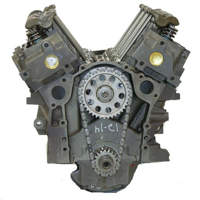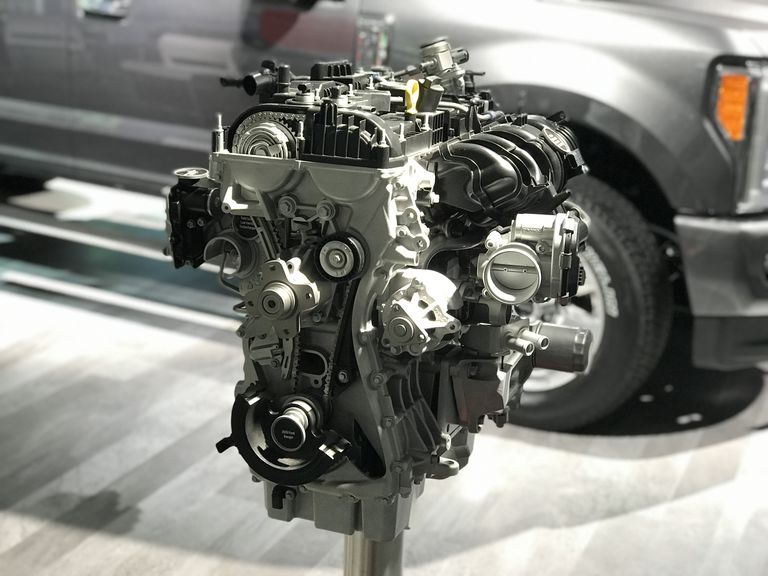Get to Know the Power and Reliability of the 2.2 Ford Ranger Engine for Any Job
Get to Know the Power and Reliability of the 2.2 Ford Ranger Engine for Any Job
Blog Article
Understanding the Basics of Auto Engines: Functions, features, and types

Review of Auto Engines
A cars and truck engine offers as the heart of a car, transforming gas right into mechanical energy to push it ahead. This intricate system consists of different components that operate in unison to guarantee ideal performance and effectiveness. The basic procedure of an automobile engine involves the inner burning process, wherein fuel and air are combined, ignited, and removed to produce power.
The engine's style can dramatically influence its efficiency, gas efficiency, and emissions. Trick elements include the cylinder block, pistons, crankshaft, and camshaft, each playing an important duty in the engine's total function.
In enhancement to these elements, engines frequently utilize various systems such as gas shot, ignition, and cooling systems to improve efficiency and long life. Understanding the standard technicians of car engines is crucial for executing and diagnosing concerns maintenance, inevitably contributing to the vehicle's integrity and effectiveness in time.

Sorts Of Auto Engines
Vehicle engines can be categorized right into numerous types based on their style, fuel type, and operational concepts. 2.2 ford ranger engine. One of the most usual categories consist of interior burning engines (ICE), electric engines, and hybrid engines
Inner burning engines, which can be additional separated into fuel and diesel engines, run by sparking a fuel-air mixture to produce power. Gasoline engines are usually lighter and smoother, while diesel motor are much more fuel-efficient and offer better torque.
Electric engines make use of electric energy saved in batteries to power an electrical motor, offering instant torque and absolutely no exhausts throughout operation. As innovation developments, electrical vehicles (EVs) are significantly ending up being preferred for their environmental advantages and reduced running expenses.
Crossbreed engines incorporate aspects of both internal combustion and electrical engines, permitting for versatile power resources and enhanced fuel efficiency. They can run in various modes, making use of either the gasoline engine, the electric motor, or both all at once.
Each type of engine has unique advantages and drawbacks, influencing their application in various automobile kinds and market sectors, from compact cars and trucks to heavy-duty trucks. Recognizing these types is necessary for making notified decisions regarding car choice and efficiency assumptions.
Engine Functions Clarified
Recognizing engine functions is critical for understanding exactly how cars run effectively. At the core of any kind of internal burning engine lies the basic process of transforming fuel into power. This procedure begins with the intake stroke, where air and fuel are drawn into the burning chamber. Following this, the compression stroke presses the air-fuel mixture, boosting its temperature level and pressure.
The ignition happens next, stiring up the combination and creating a rapid development of gases. This force drives the piston down throughout the power stroke, which inevitably translates into the rotational movement of the crankshaft. The exhaust stroke then removes the spent gases from the chamber, giving way for a brand-new cycle to begin.
In enhancement to these main functions, engines likewise include systems that take care of cooling and lubrication, ensuring optimal functional temperature levels and lowering friction between relocating parts. This elaborate interaction of features allows the engine to produce the power needed for vehicle propulsion while keeping efficiency and dependability. Recognizing these functions gives beneficial understanding into the complexities of auto design and enhances the capability to diagnose and deal with engine-related problems successfully.
Secret Engine Attributes
Engine design includes several vital features that substantially influence performance, efficiency, and durability. Among one of the most critical elements is the engine arrangement, that includes inline, V-type, and flat layouts. Each setup impacts the engine's equilibrium, dimension, and power output, consequently affecting overall lorry dynamics.
Another vital function is the engine displacement, describing the total volume of all cylinders. Larger displacements usually produce more power but may endanger gas efficiency. Engine materials also play an essential role; high-strength and lightweight materials, such as aluminum and magnesium alloys, boost efficiency without including extreme weight.
The type of gas shot system utilized-- such as direct or multi-port shot-- affects burning efficiency and exhausts. Turbo charging Learn More and turbocharging are functions that increase engine efficiency forcibly extra air into the burning chamber, boosting power result without substantially increasing engine size.
Lastly, the presence of advanced engine monitoring systems optimizes fuel-air blend and ignition timing, adding to smoother operation and much better fuel economy. Jointly, these features specify an engine's abilities, establishing the structure for its efficiency and durability in an affordable auto landscape.
Maintenance Tips for Engines
Appropriate engine upkeep is crucial for making certain optimum performance and durability, as overlooking routine care can cause significant problems down the line. To keep your engine effectively, start with routine oil adjustments, typically every 3,000 to 7,500 miles, depending on the kind of oil utilized. Fresh oil lubes engine components, decreasing friction and wear.
In addition, keeping track of coolant degrees is crucial to avoid getting too hot. Make certain that the coolant is covered up and is in excellent condition to keep reliable temperature level policy. Regularly examine and replace air and gas filters, as clogged filters can hinder air movement and gas distribution, compromising engine efficiency.
Moreover, take notice of ignition system and ignition systems. Worn or defective spark plugs can result in misfiring and lowered performance. Inspecting the battery terminals and links for deterioration is additionally essential, as a weak battery can influence engine starting.

Conclusion
In summary, a comprehensive understanding of automobile engines encompasses different kinds, functions, and crucial functions that considerably influence lorry efficiency. Internal combustion engines, together with electric and hybrid alternatives, demonstrate varied devices for power conversion. 2.2 ford ranger engine. Recognizing the necessary features, such as intake and exhaust cycles, together with critical engine features like arrangement and gas shot systems, equips car owners with the expertise required for efficient upkeep and procedure, inevitably boosting lorry longevity and efficiency
A car engine offers as the heart of a car, converting gas into mechanical energy to webpage push it forward. The essential procedure of an auto engine entails the interior burning process, wherein fuel and air are combined, fired up, and expelled to produce power.
Consistently inspect and replace air and fuel filters, as clogged up filters can prevent airflow try this web-site and gas delivery, compromising engine effectiveness. - 2.2 ford ranger engine
In summary, a comprehensive understanding of auto engines incorporates different types, features, and key attributes that substantially influence lorry performance. Acknowledging the important functions, such as consumption and exhaust cycles, along with vital engine features like configuration and fuel injection systems, equips car proprietors with the understanding needed for reliable maintenance and procedure, inevitably improving automobile longevity and efficiency.
Report this page